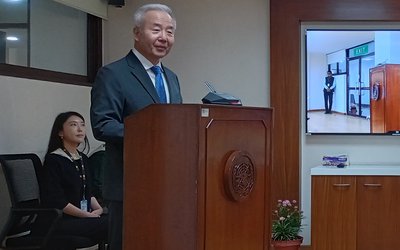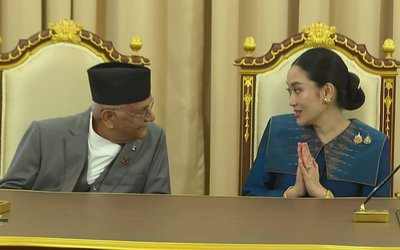More on National





International Non-GovernmentalOrganizations have shown that they can help Nepal at the time of crisis. Despite their limited resources and mandates, Nepal’s INGOs joined the rescue and relief work along with other agencies.
With their reach to the community, INGOs helped the victims and the community people with relief materials. They were mobilized in earthquake hit areas.
In and around Gorkha, one of Nepal’s hardest hit areas, relief agencies saied they were coordinating efforts more closely. With the instruction of District Development Committee and District Natural Disaster Relief Committee, INGOs were mobilized in the area.
Practical Action Nepal, Save the Children, Oxfam,Good Neighbor,DoctorsWithout Border,CARE-Nepal, DCA and Eco-Himal joined the relief operations in the remote parts of Gorkha.
The town was near the epicenter of the 7.8-magnitude earthquake, which on April 25 shook this impoverished Himalayan nation and killed more than thousands.
A CARE official in Gorkha said the aid organization was teaming up with the World Food Program to reach destinations further afield.
While NGOs were saving lives on the ground, freeing people trapped under the rubble and building emergency shelters, a team of mappers in the United Kingdom teamed up with Kathmandu Living Labs to build a real-time map of the affected areas. Their work could allow humanitarian staff to deliver aid faster and more effectively, particularly if there are further tremors.
According to Lucy Beck, CARE is distributing primarily non-food items, including hygiene packs, using choppers and trucks organized by WFP that can reach more remote villages.
Caroline Anning of Save the Children’s emergency-response team said its emphasis was on distributing “shelter kits” with tarps and blankets, and also baby kits, including warm baby clothes and woolen hats for infants sleeping outdoors.
The organization is also doing air-drops, but “there aren’t enough helicopters,” she said.Save the Children already had some 400 staff in Nepal before the quake, which helped it move fast.
“We’ve distributed basically everything in stock,” Ms. Anning said. Congestion at Katmandu’s one international airport had delayed some incoming shipments.
An official with a Swiss medical team said that of its first full day in Gorkha — “the big issue was just to organize patients.”
The team was helping doctors at a local 50-bed hospital, said Olivier Hagon of the Swiss Agency for Development and Cooperation, and triage was a “big challenge” with so many patients arriving, often with infected wounds due to the distances they had traveled from remote villages.
Now, he said, things are looking “much better.” His group, working with local doctors, expected to see five operations completed by the end of that day. The team focused on maternal and pediatric treatment.
Hagon said he was starting to see an increase in what some aid workers called “humanitarian tourists”–people offering medical help who arrived unaffiliated with any group.





